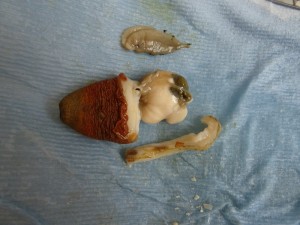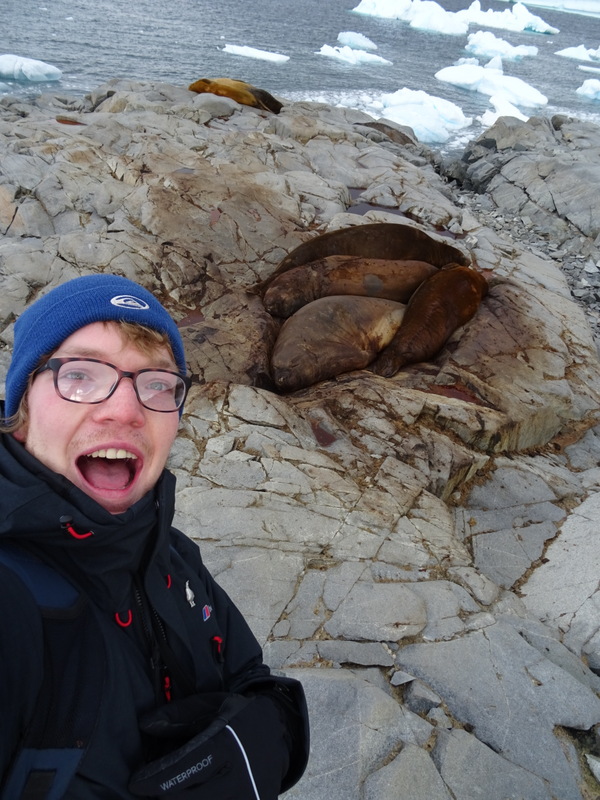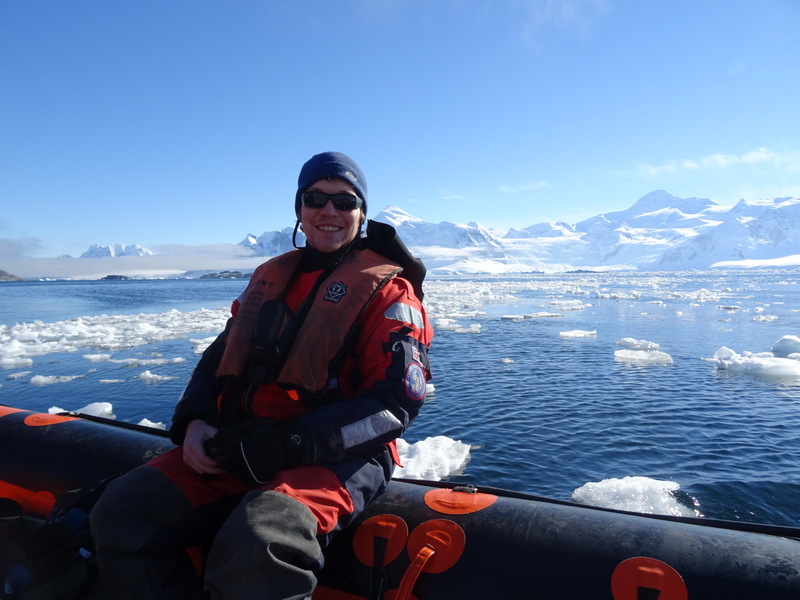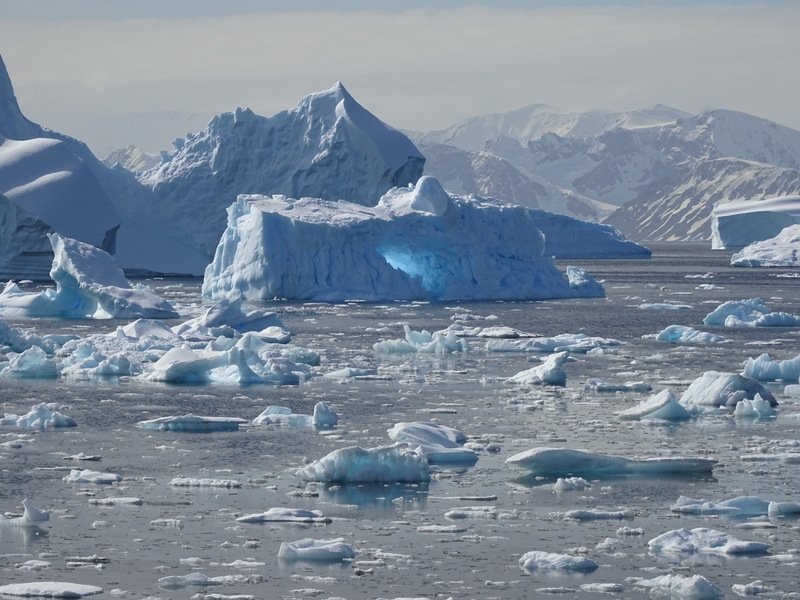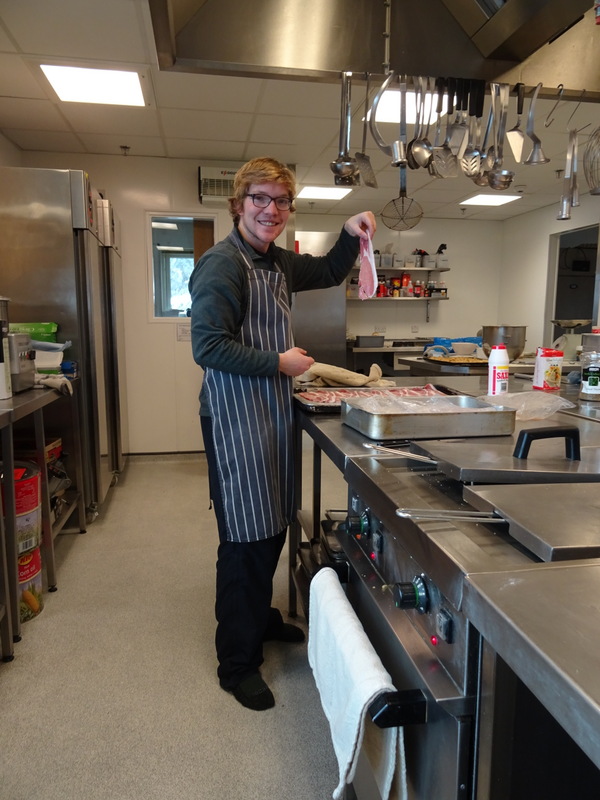What a fantastic week I’ve had! Antarctica is just like you see in the David Attenborough documentaries but 88,000 times more glorious! 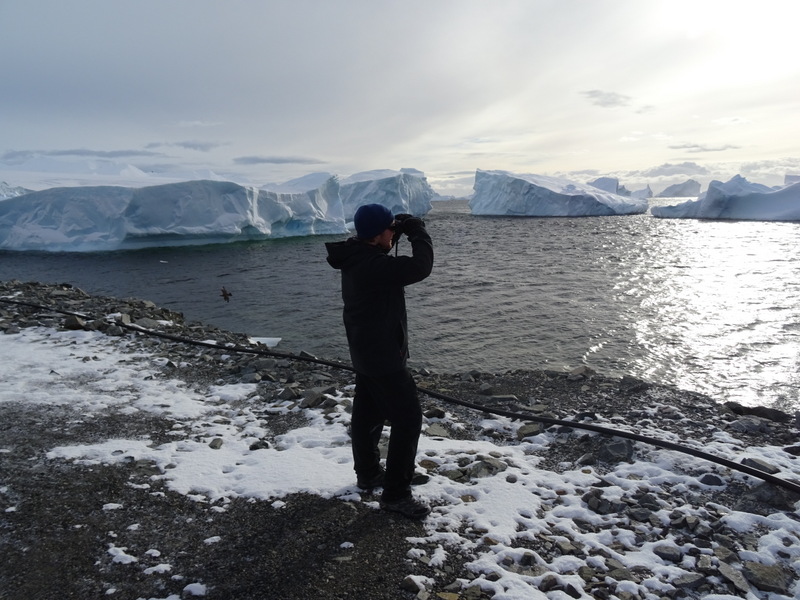
Diet switch experiment progress
The diet switch experiment is going smoothly, with both the clams and the starfish feeding on their new diets. I feel the starfish are being rather spoilt on their new diet of “Princes tinned ham”; they seem to be enjoying it! Since the last blog I have completed both the ‘day 0’ and ‘day 5’ dissections. The clam, Laternula elliptica, dissection is relatively simple, although they do tend to squirt you with water from their! I remove their gills and mantle tissue and determine their sex by microscopic inspection of their gonads. The starfish, Odontaster validus, are slightly more difficult, especially as I am removing their tiny delicate tube feet, which they retract into a (ambulacral) groove and are protected by a row of spines. I don’t remember such difficulty when carrying out Asterias rubens dissections back in first year. These hardy Antarctic starfish seem to me to be more robust than there northern relatives in general! I’ll have to remember this when getting into ‘northerner’ vs ‘southerner’ debates!
Daily routine
My daily routine involves getting up at 7.30, breakfast at 8.00, followed by the boat meeting at 8.30, during which all the days dives and boat activity are discussed. There are about 12 designated dive sites in the surrounding area and each day the scientists, dive officer and boatman discuss where they need to survey and collect samples. I am not diving during my time here, but boat meetings are when I can sign myself up to either help out on the boats with CTD monitoring or volunteer for “seal watch’. ‘Seal watch’ is a 30 minute lookout for leopard seals (or Orcas!) prior to any diving activity. I personally am still yet to see either of these top Antarctic predators, but a pod of 12 Orca were seen in the bay the other day so fingers crossed! Other whales that frequent this area of the Peninsula include Sei, Minke and Humpback whales, but apparently it has been a particularly bad year for these sightings. The rest of my day involves tending to every need of my beloved starfish and clams. When I am not pampering them I get involved with other research in the lab, so far this has included sediment sorting, DNA extractions and thermo-tolerance experiments of various benthic species.
In my free time, one of my favourite things to do is walk around ‘the Point’, about a 45 minute walk around the headland of the island which takes you away from all the hustle and bustle of the base. On a calm afternoon, all you can hear is the odd Elephant seal sneeze (or snore), Adelie penguin squawk and the occasional bone-chilling crunch of icebergs colliding. The wildlife is incredible, with Weddell and Crabeater seals often hauled out snoozing on the ice. South polar skuas dive-bomb you if you approach their nests too closely. A few Antarctic fur seals have started to arrive too; they like the Elephant seals are adolescents who have come here to moult before moving north for winter. They always seem to be angry, as they roar and growl at me as I walk past, but they are getting more comfortable with my presence recently.
The icebergs that surround the headland are so beautiful. They contain so many different shades of blue and when the sunlight catches them in a certain way they appear to glow (see photo for evidence)! I’ve been here only a week and I must have taken around 200 photos of these colossal ice goliaths, and even the best photos don’t do them justice!
The Antarctic people
The diverse range of people down here is amazing; every one of the 60 or so people down here has a purpose to keep the station functioning. Most of them have been here for the last 6 months, some for the last 12 months. There are electricians, mechanics, plumbers, pilots, a carpenter, a boatman, two doctors, and most importantly for the moral of the station: two excellent chefs (fresh bread is baked on station)! Then of course there are the scientists, or ‘beakers’ as we are referred to, and all the field assistants! A strong sense of community exists between all Rothera’s inhabitants, and almost everyone down here has beards (apart from the women obviously). I am trying to join this trend, but my ginger whiskers and neck fluff cannot currently be classed as a beard! I’ll keep you updated none the less with beard growth progress!
BAS traditions
There are a number of BAS traditions that seem to have stemmed from Naval roots. Everyday one person gets put on ‘Gash’; this is basically cleaning duty and also involves helping the chefs with cooking. The person who is on ‘Gash’ then gets the privilege to choose the film that gets played on the projector, last night’s film was Disney’s ‘Frozen’ ironically, and yes the scientists did sing along!
Then every Friday at 5pm is ‘Scrub-out’, where everyone gets given a task and the whole base is given a big clean up! Every Saturday a formal evening meal takes place, often with a theme. Last Saturday was ‘folk night’ and we had live music from the various bands that get put together during the long dark months of winter.
I’ll give you another update in a week or so (providing the internet still works!).
Ant(arctica) Crook
Twitter: @AtCrooky

